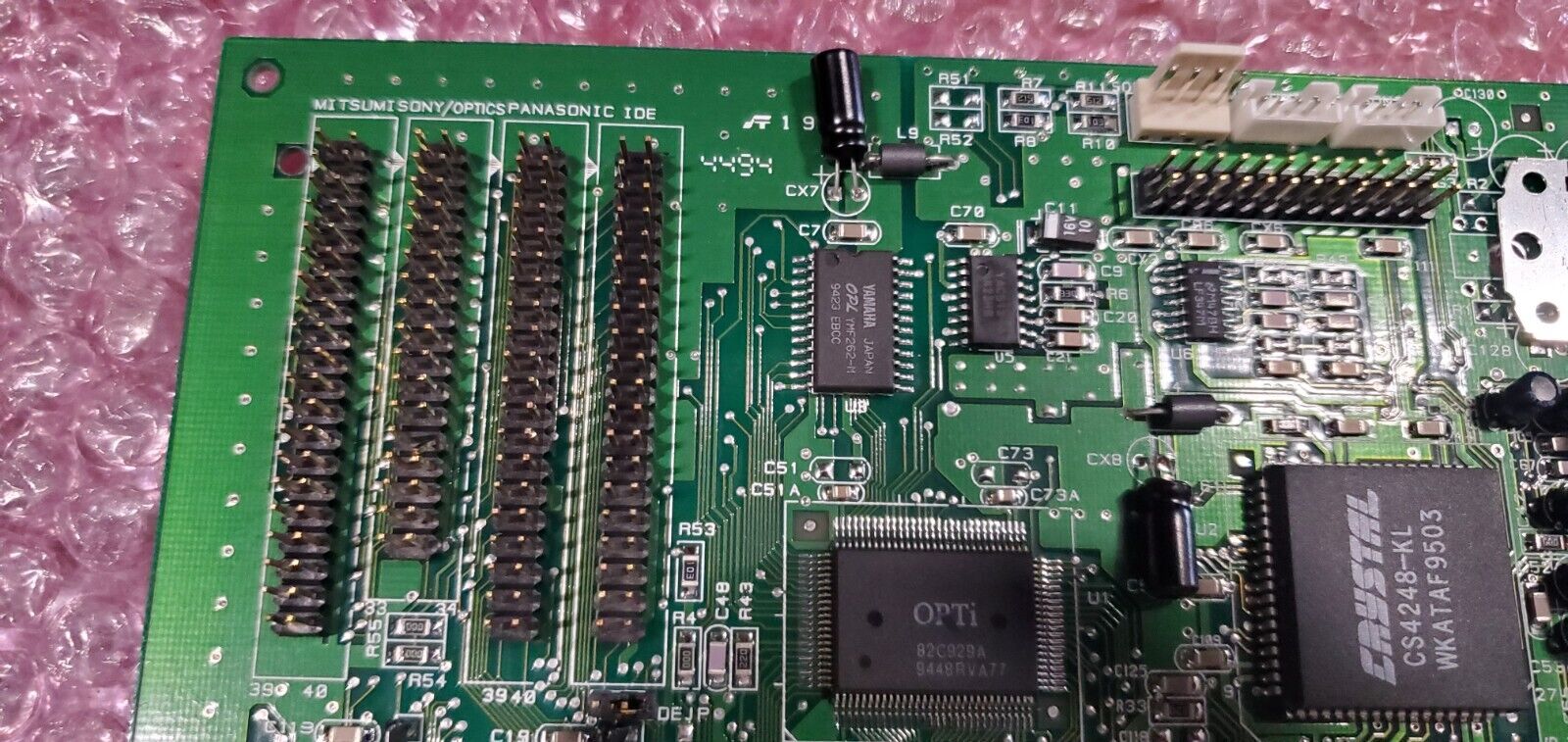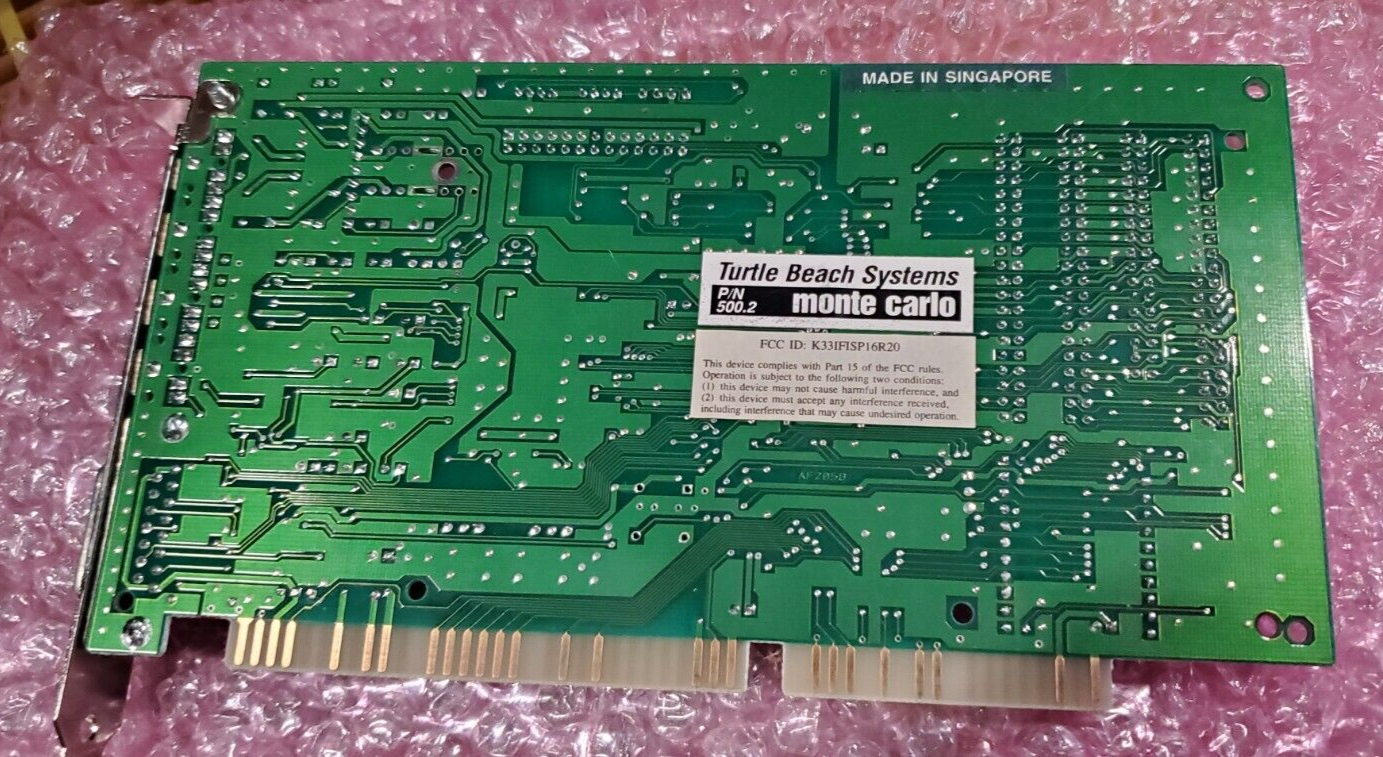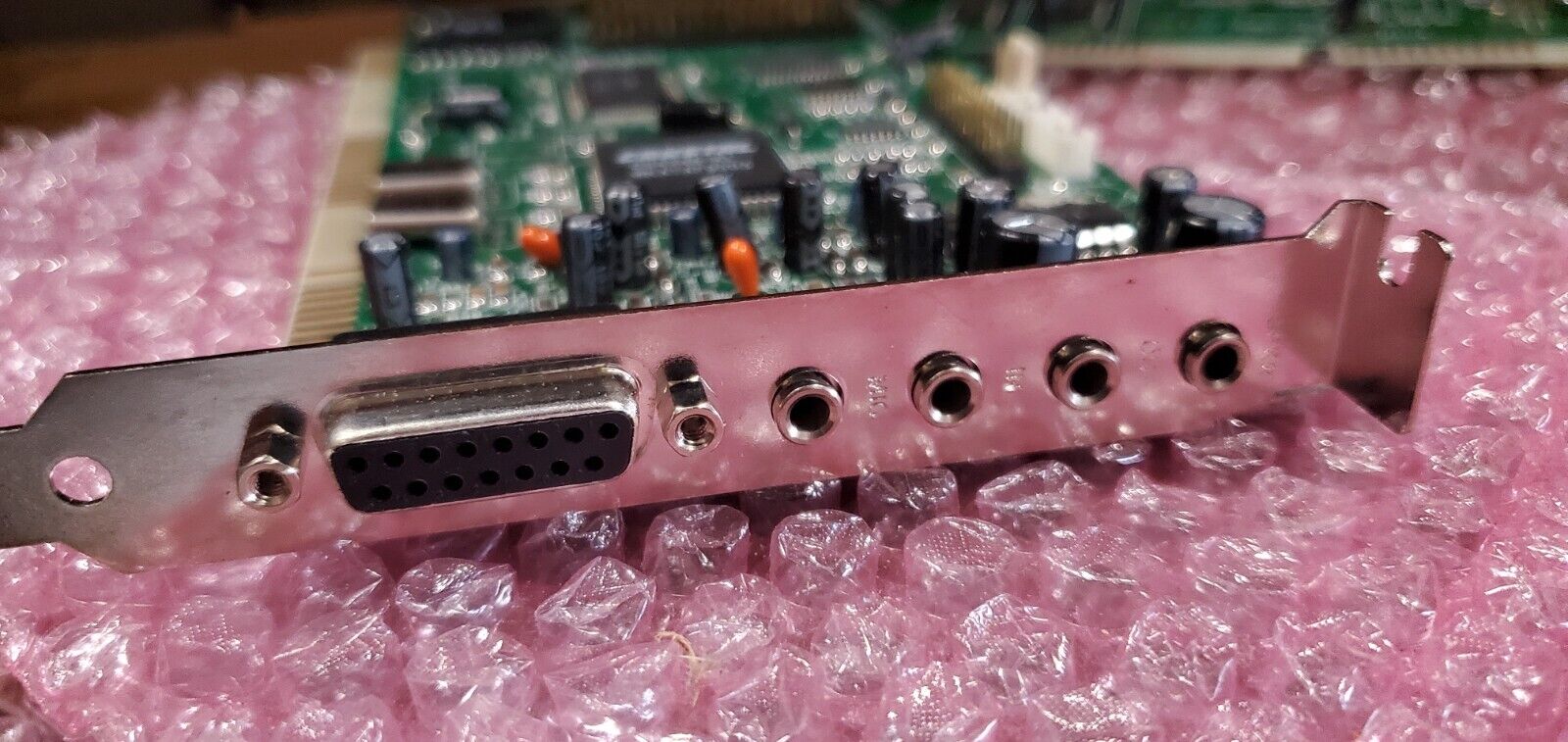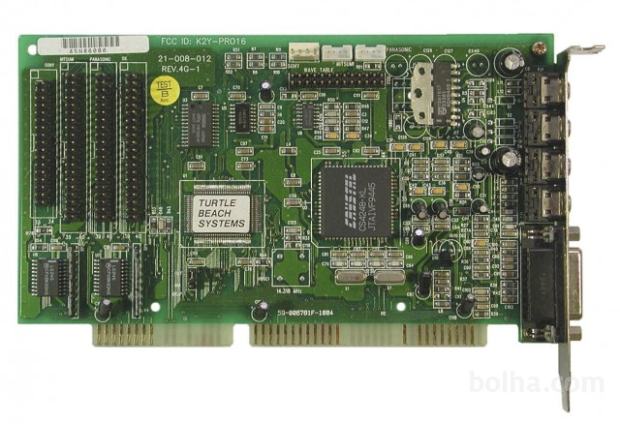Turtle Beach Monte Carlo
In their ISA sound card range, aside from the Tropez series of cards, the Monte Carlo is the only other that provided Sound Blaster, SB Pro and Windows Sound System (WSS) compatibility coupled with GM wavetable sampled sound in software. The Monte Carlo was the budget offering, released alongside their mid-range Tropez in 1995.
|
Released | Early 1995 |
| Bus | 16-bit ISA | |
| Synthesizer | Yamaha YMF262 | |
| Chipset | Crystal CS4248, OPTi 82C929A "MAD 16 Pro" | |
| Wavetable | Software-based or via Wave Blaster header | |
| Ports | Mono Mic In, Stereo Line In, Stereo Speaker Out, MIDI port | |
| Part # | 500.2 | |
| FCC ID# | K2Y-PRO16, K33IFISP16R20 | |
| Price | At launch: $399 list, $329 street Later reduced to: £145 / $149 |
|
| See Also |
The card features an MPU-401-compatible MIDI port (UART only), stereo line-in, stereo line-out, mono mic-in and an amplified speaker-out. It was also pretty unique in providing a header for almost every CD-ROM interface - Sony, Mitsumi, Panasonic and IDE.
The Monte Carlo also includes a software-based General MIDI wavetable synthesizer in the form of V-Synth, which can be used to load up 16-bit samples into your PC's main memory. This can use either a 512 KB soundfont or a 2 MB one, and these are in the same .WFB (WaveFront Bank) format used by the Tropez and Maui.
Controlling the software in Windows is achieved via the Sierra Audio Rack software which includes the mixer, a CD player, MIDI player and digital audio player. Also included is Turtle Beach's wave file editor, Stratos which is a notation-based sequencer, and a CD-ROM with 50 demos of games, of which 15 are the full game.
Board Revisions
Just one board revision is known: 4G-1
Competition
In the Media
Though the Monterey continues the company's traditional dedication to great sound, the Tropez sacrifices some sonic accuracy for improved compatibility. The Monte Carlo's inferior sound quality makes it a bad bet, even for game players.
If no-compromise sound quality is what you're after, the Monterey is what you want. It doesn't offer Sound Blaster or Ad Lib compatibility and it doesn't have a built-in CD-ROM drive controller, but MIDI composers and multimedia journeymen will find it has one of the best wavetable MIDI synthesizers and the most accurate digital recording and playback available. Turtle Beach's Hurricane architecture on the Monterey allows you to record and play back samples simultaneously. It doesn't use up a DMA channel, but you have to dedicate 32K of upper memory.
The new Monterey uses a different MIDI wavetable than the one used on the original MultiSound. Gone is the earlier E-MU Proteus 1 in favor of ICS' WaveFront with 4MB of 16-bit samples. Though better than most, it offers less impressive wavetable than the original Proteus. Several of the presets, such as the bagpipes, are not very realistic. On the other hand, the bundled Windows software allows you to set up any .WAV file as a sample and can adjust a variety of synthesizer parameters (absorption, predelay) in real time.
If you don't require absolutely top-notch sound and want to be able to play all those Sound Blaster-compatible games on your PC, Turtle Beach now offers the Tropez. Although it lacks the DSP and Hurricane architecture of the Monterey, Turtle Beach's Tropez is still a solid front-runner. It comes with a separate microphone input and a full suite of Windows applets: a patch editor for MIDI work (WavePatch), a MIDI songwriting program (Stratos), an OLE-compatible .WAV file recorder (MicroWave), a .WAV file editor (Wave SE), and a stereo system-like graphic front end (Sierra) for playing back various sound sources - including audio CDs. Like the Monterey, however, there's no built-in amplifier, so you'll need quality powered speakers. The Tropez uses the ICS WaveFront wavetable and 2MB of sample ROM. Three SIMM slots can accommodate up to 12MB of RAM.
The inexpensive Monte Carlo is aimed squarely at game players with limited finances. It does include a 4-watt-per-channel amplifier and interfaces to support CD-ROM drives from Mitsumi, Panasonic, and Sony. It comes with the same set of applets as the Tropez, minus WavePatch, and offers Sound Blaster, Windows Sound System, and OLE compatibility. The primary MIDI workhorse here is a Yamaha OPL3 FM synthesizer, although a software-based virtual wavetable is included.
Unfortunately, the Monte Carlo turned in poor audio test results. Frequency response was especially deficient in the lower bass end, with virtually no bass response below 400 Hz. The card's channel separation was so poor (consistently below 20 dB) that one could not reasonably consider the Monte Carlo to be a stereo sound card."
PC Magazine, 28th March 1995
Setting it Up
I don't have any information on configuring the Monte Carlo.
Downloads
Operation Manual Get in touch if you can provide this! |
Original Driver Disk
Get in touch if you can provide this! |
|
More Pictures
.jpg)
.jpg)
.jpg)




